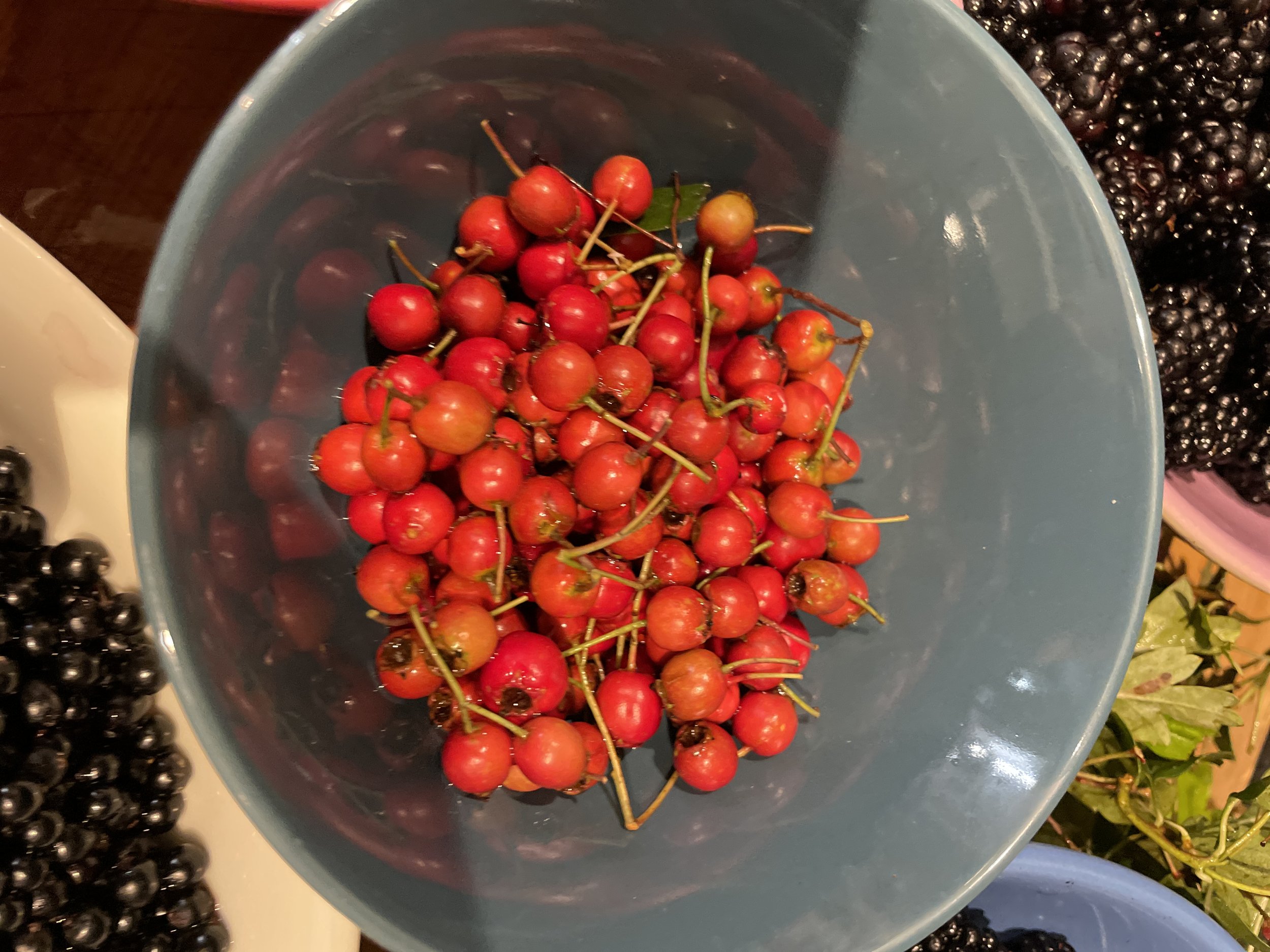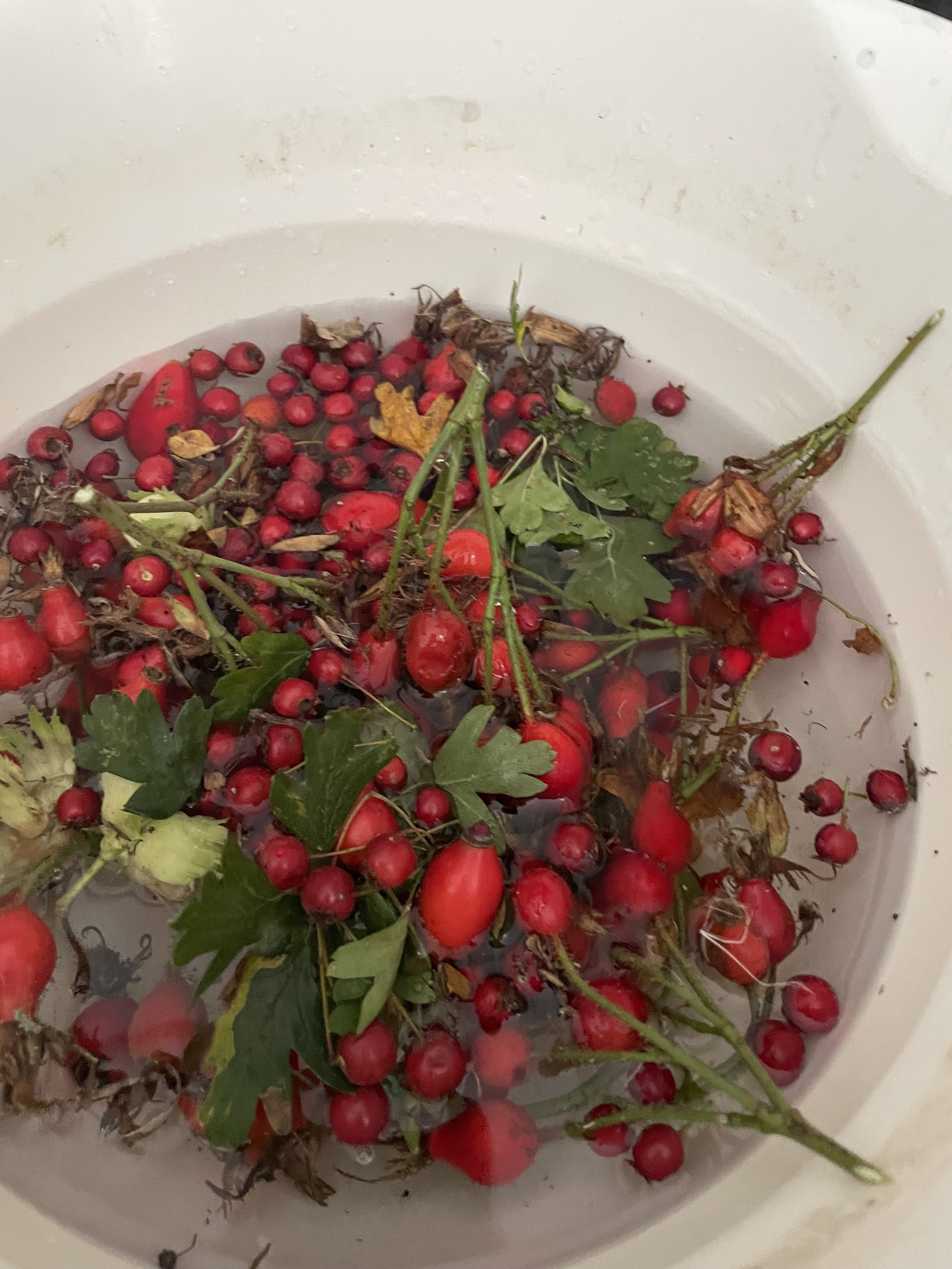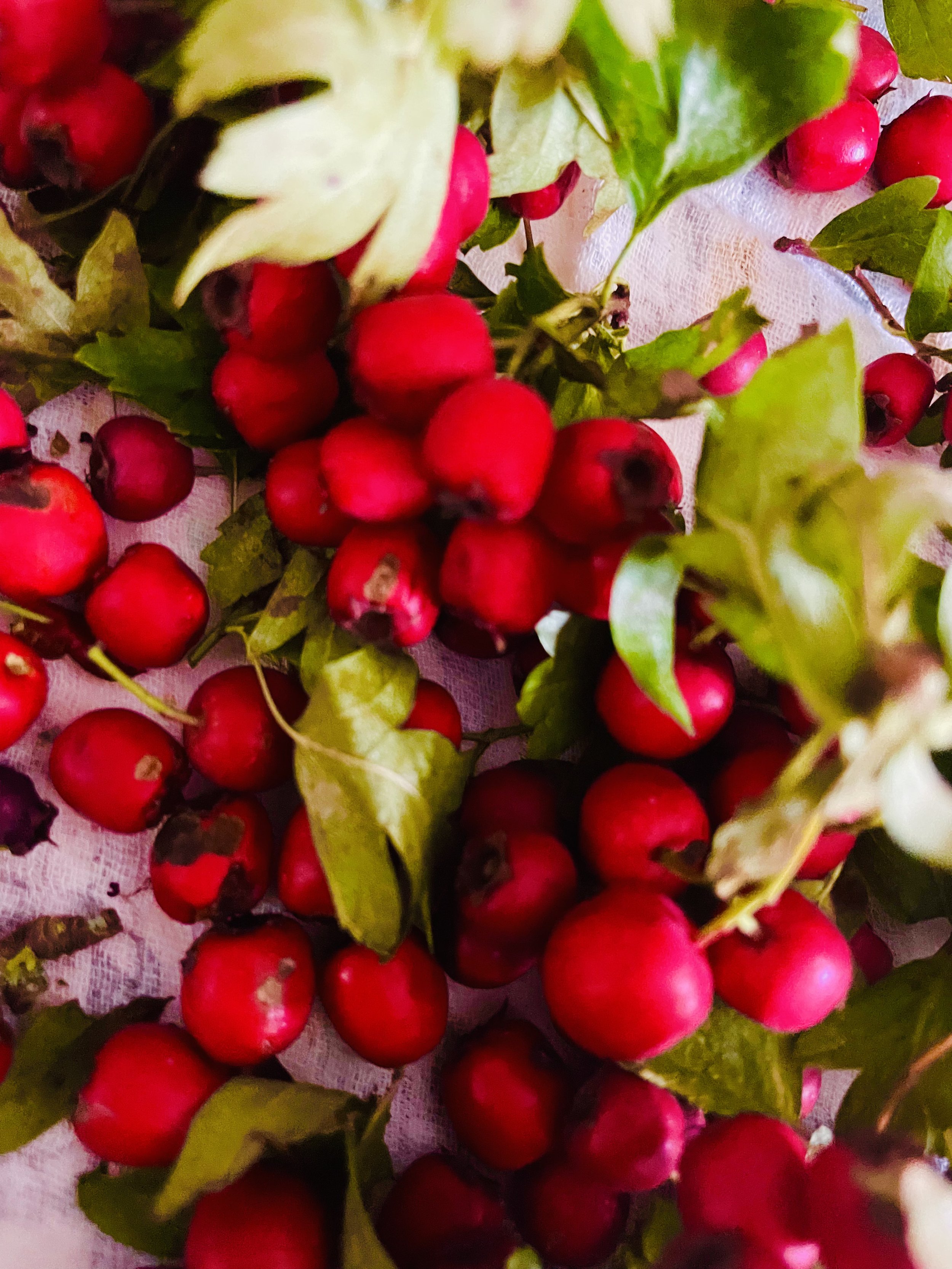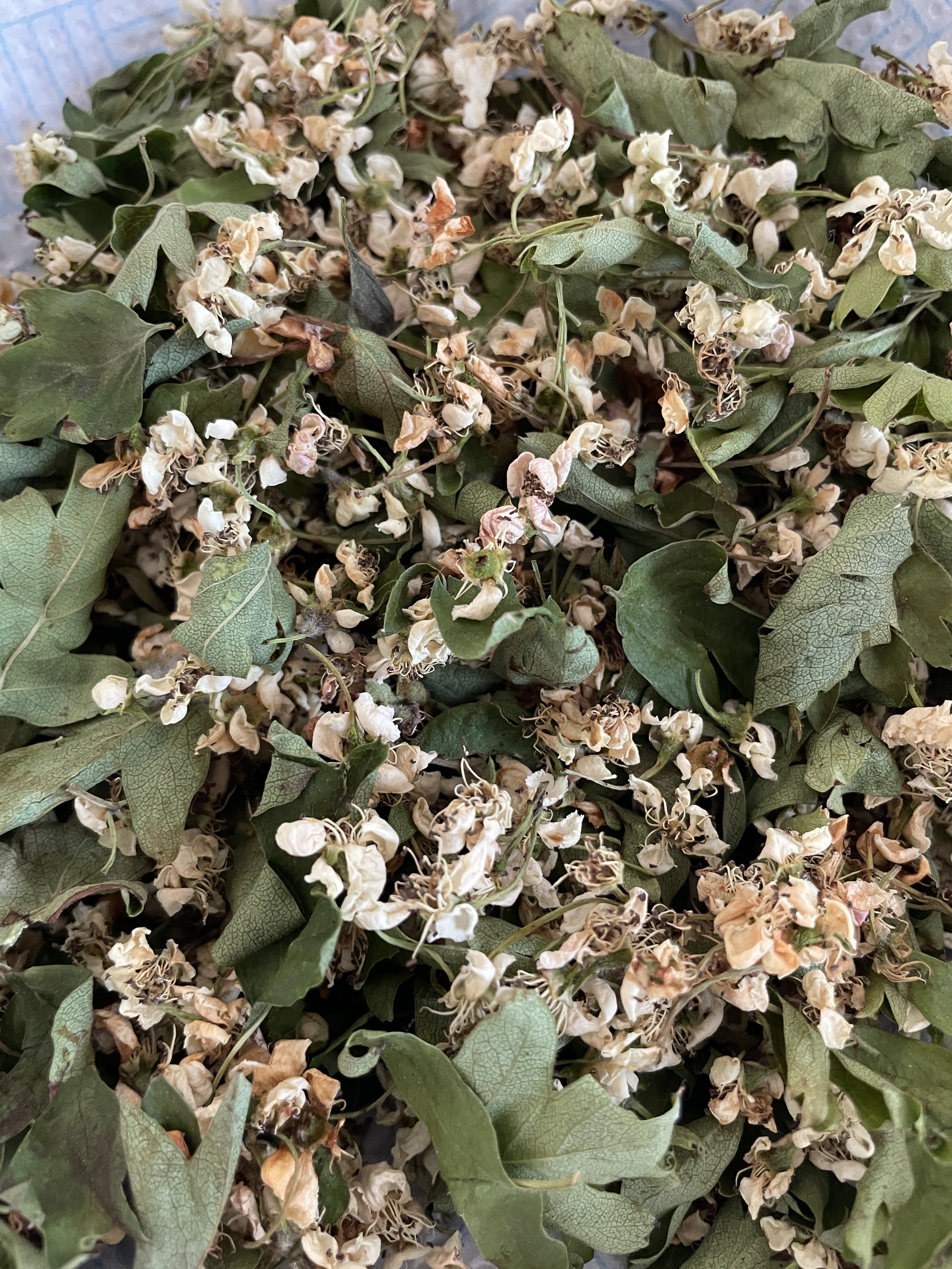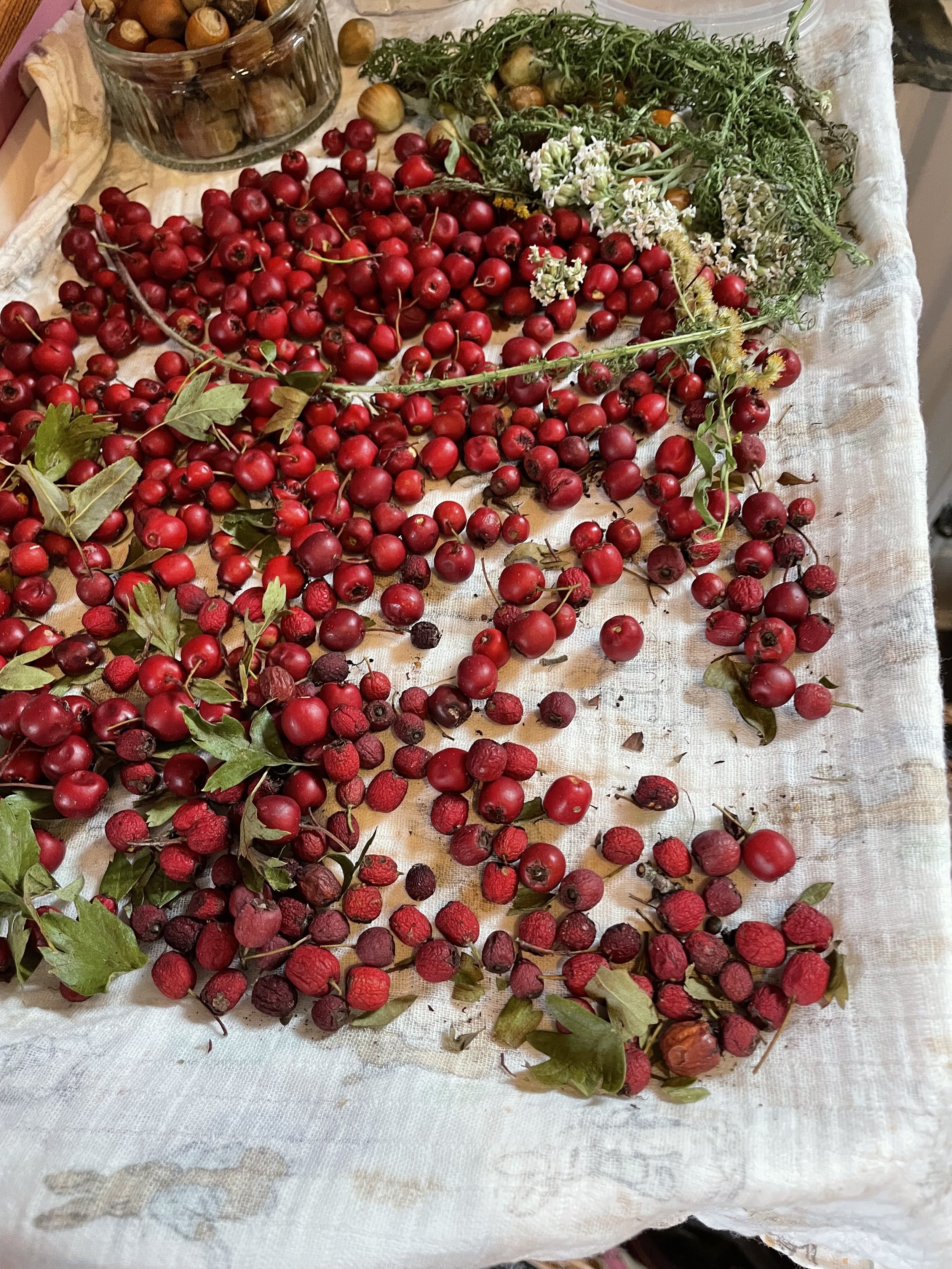The Hawthorn tree or bush, is quite an old/new find for me, not because I didn’t know about it, I did, I just didn’t think of it as relevant for my foraging. How wrong I was !!
Let’s begin with how utterly relevant this tree is for both my research into it a wise woman’s medical bag and rituals and mythology around it and why it is more relevant than ever for me now.
Food for wildlife…
Before it became valuable to humans the Common hawthorn could support hundreds of other species. Named after the month in which it blooms and is a sign that spring is turning to summer. The pale green leaves of this hedgerow staple are often the first to appear in spring, with an explosion of pretty pale-pink blossom in May. It simply teems with wildlife from bugs to birds.
The Hawthorn is the food for caterpillars, including the hawthorn, orchard ermine, pear leaf blister, rhomboid tortrix, light emerald, and many more moths. Its flowers are eaten by dormice and provide nectar and pollen for bees and other pollinating insects. The haws are rich in antioxidants and are eaten by migrating birds, such as redwings, fieldfares, and thrushes, as well as small mammals. The dense, thorny foliage makes a fantastic nesting shelter for many species of birds.
Its blossoming marks the point at which spring turns into summer, and the old saying ‘Cast ne’er a clout ere May is out’ almost certainly refers to the opening of hawthorn flowers rather than the end of the month.
Hawthorn can provide nourishment to the spiritual heart (emotional body), but it also acts on the physical body as well. The berry is full of vitamin C and flavonoids, thus making a nutrient-rich, antioxidant herbal infusion.
Hawthorn is the ultimate heart tonic. It’s full of complex flavonoids that work together to support the circulatory system. As an adaptogen, it is best to allow hawthorn several weeks to several months to adjust a damaged system. Hawthorn works well with other tonic herbs and strengthens their effect on the body.
Its medicinal abilities have become relevant for me and my husband, as he has been diagnosed with very high blood pressure which is a hereditary condition and I have an arithmea and low blood pressure. meaning this plant can help regulate both our conditions.
Flavonoids can help reduce inflammation and oxidative stress (de la Forêt, 2016), and when taken on a regular basis, hawthorn berry is known as a tonic herb for the cardiovascular system (Tilgner, 2009). The leaves and flowers of hawthorn can also provide a calming, nervine quality. Combine all three plant parts—leaf, flower, and berry—and you’ll have a tasty and nourishing tea that is relaxing.
Hawthorn is known as an herb for the physical heart it can improve the oxygen utilization of the heart as well as improve circulation and energize the cells of the heart (Easley & Horne, 2016). It is known to tone and strengthen the heart muscle (Easley & Horne, 2016) acting as a cardiovascular trophorestorative (Tilgner, 2009).
Hawthorn does more than just support the physical heart. The berries can be a gentle digestive aid (Easley & Horne, 2016). When taken as a cordial or tea after meals, hawthorn can soothe digestion as well as open the heart. also has bitter alkaloids, especially in the leaves and flowers that stabilize the digestive system as well as the heart. The presence of catechins in hawthorn gives this plant an astringent effect that can be detected even in a weak cup of hawthorn tea.
Another benefit of Hawthorn is it is a generous plant to use in times of tenderness, especially when grief is present. It can soften our hearts as well as promote forgiveness of self and others. When one feels in need of a hug, we are told to turn towards Hawthorn. It matches both strength and softness while allowing for the ability to cultivate healthy boundaries as well as gentleness. It also helps support stress with its nervine actions (Easley & Horne, 2016). Moving through grief and a broken heart is edgy and stressful. As a nervine, it can support an overworked nervous system as well as soothe frayed sleep patterns.
Hawthorn is a pagan symbol of fertility and has ancient associations with May Day. It was the ancestor of the Maypole and its leaves and flowers the source of May Day garlands as well as appearing in the wreath of the Green Man. It was never brought into the home. It was believed that bringing hawthorn blossom inside would be followed by illness and death, and in medieval times it was said that hawthorn blossom smelled like the Great Plague.
Botanists later learned that the chemical trimethylamine in hawthorn blossom is also one of the first chemicals formed in decaying animal tissue, so it is not surprising that hawthorn flowers are associated with death.
Hawthorn is the thorn of the Celtic phrase “By Oak, Ash, and Thorn.” Its association with faerie and as a gateway to the faerie worlds is long-standing, but Hawthorn’s place in myth and folklore extends well beyond the United Kingdom and the Celts.
The ancient Greeks and Romans used hawthorn in marriage and birth ceremonies. It was associated with the goddess Cardea and was used as a symbol of home. Christian tradition, says hawthorn is associated with the crown of thorns worn by Jesus and the wood from which the staff of Joseph of Arimathea was made. In Arabic culture, Hawthorn has been long associated with death and was used in funeral pyres. Possibly this was because fire-fed by hawthorn burns extremely hot.
Hawthorn wood has been used widely for small carvings, such as combs and runes. In Serbia, it was reputed to be a good wood for the stakes used for impaling vampires!
Hawthorn also holds some associations with the goddesses Flora and Hymen.
Hawthorn for the heart
picking, preparing, drying, and making preparations of hawthorn.
On the edge of summer, as the solstice approaches
we see the last shrubs of the season,
ladened with deep red berries…
As red as the blood that flows through the heart that this ever-giving tree supports.
